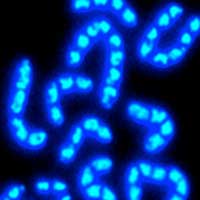| May 26, 2020 |
|
|
|
(Nanowerk News) Bacteria, fungi and plants sometimes produce metal-binding substances that can be harnessed, for example for the extraction of raw materials, for their separation, for cleaning soils or for medical purposes. Professor Dirk Tischler, Head of the Microbial Biotechnology research group at Ruhr-Universitt Bochum (RUB), outlines how these natural substances or modified semi-artificial variants of them can be produced according to genetic information in an article in Natural Product Reports (“Metal binding ability of microbial natural metal chelators and potential applications”).
|
How to extract metals from the environment
|
|
Microorganisms such as fungi and bacteria as well as plants generate a wide range of chemical substances that are not absolutely necessary for their survival. Such so-called secondary metabolites are usually formed in response to current environmental conditions. They include metal-binding molecules called chelators.
|
|
The best described group of chelators are the iron-binding siderophores. They are relevant for many metabolic processes, as iron is an essential component of many enzymes and signalling pathways.
|
|
For example, pathogenic bacteria use siderophores to extract iron from their host for their metabolism. The host might then suffer from iron deficiency. But siderophores are also used by bacteria living in soil that thus get access to iron and, as a result, gain an advantage over other organisms in the same habitat.
|
|
In addition to iron-specific chelators, there are a number of others for various metals and metalloids such as zinc, vanadium, molybdenum or even uranium oxides.
|
Many potential applications
|
|
Such chelators have many potential applications, explains Dirk Tischler. They can be used, for example, to remediate floors, selectively extract or separate raw materials, or in biosensorics or medicine. In medical applications, siderophores are used to treat iron overload in the body, a disorder known as iron storage disease.
|
|
Over the last few years, his research group, together with other teams, has identified further strains that form chelators and described new structures. They have also successfully deciphered the genetic information for the formation of these substances and introduced them into easy-to-handle organisms such as Escherichia coli bacteria. These bacteria then serve as producers of the required natural substances or of modified substances. This is how we can create semi-artificial compounds, says Dirk Tischler.
|
Biosynthesis of precursors
|
|
In the review article, he describes the different natural chelators and their ability to bind metals and metalloids and explores current and potential future applications.
|
|
At present, we are using the knowledge weve gained so far to create artificial biosynthetic pathways that enable us to generate and characterise precursors of siderophores, concludes Tischler. These precursors will subsequently be chemically modified in order to gain access to new drug classes.
|

